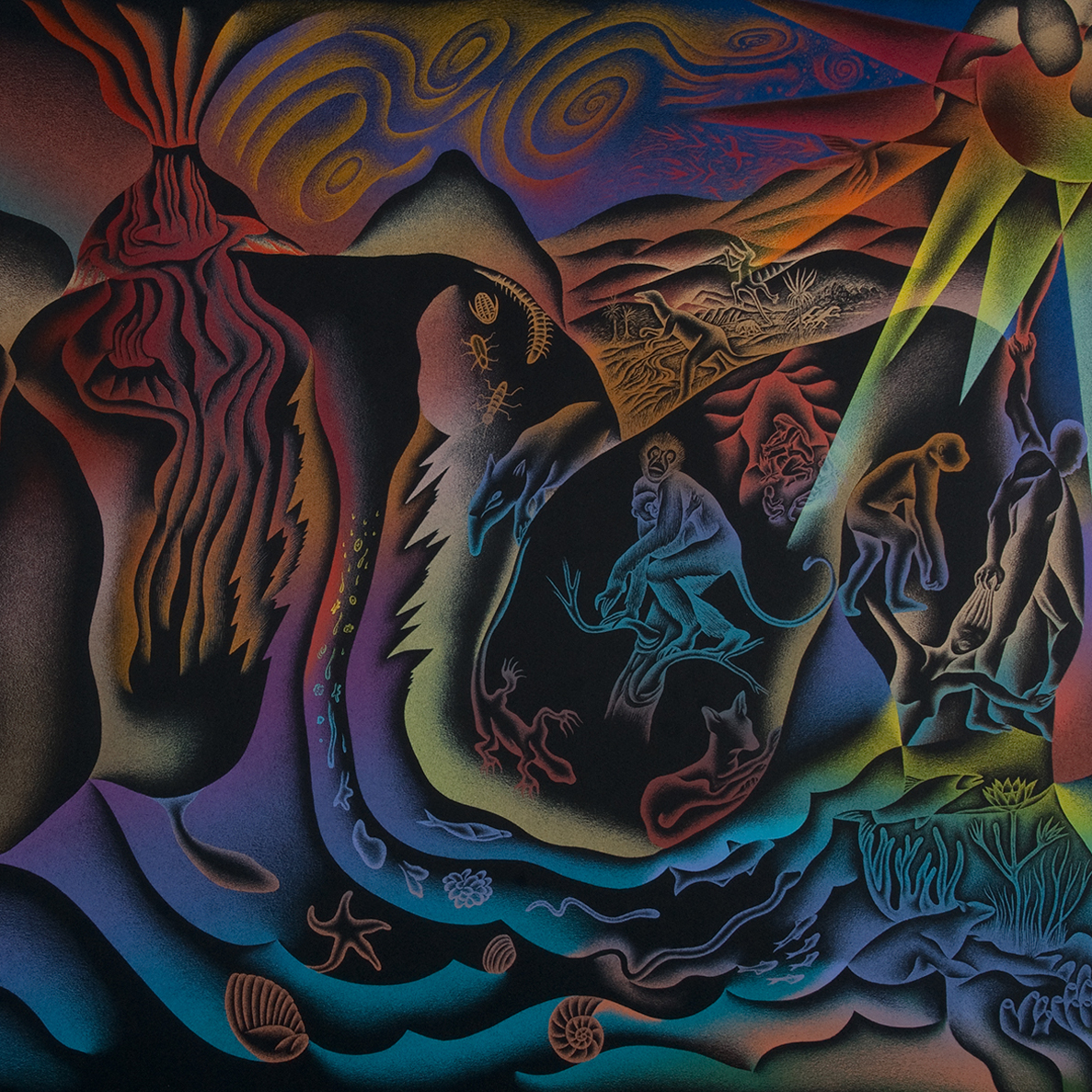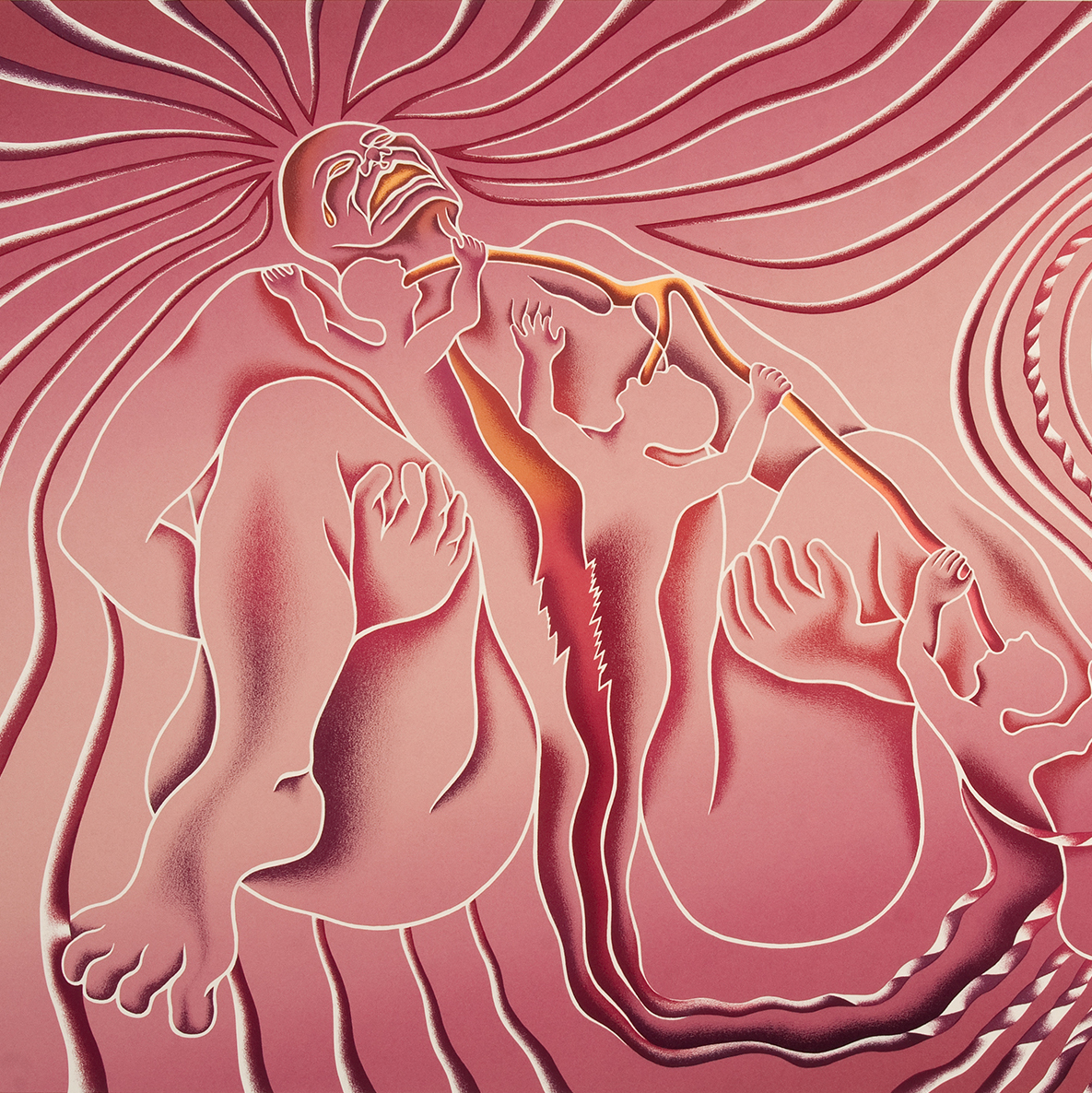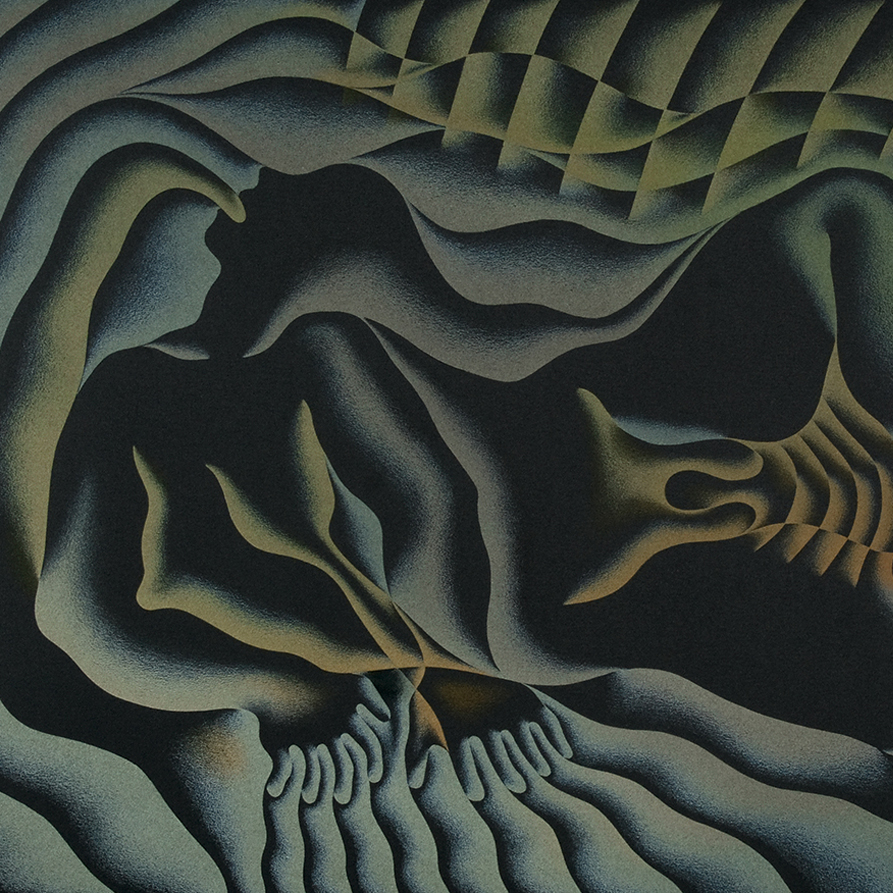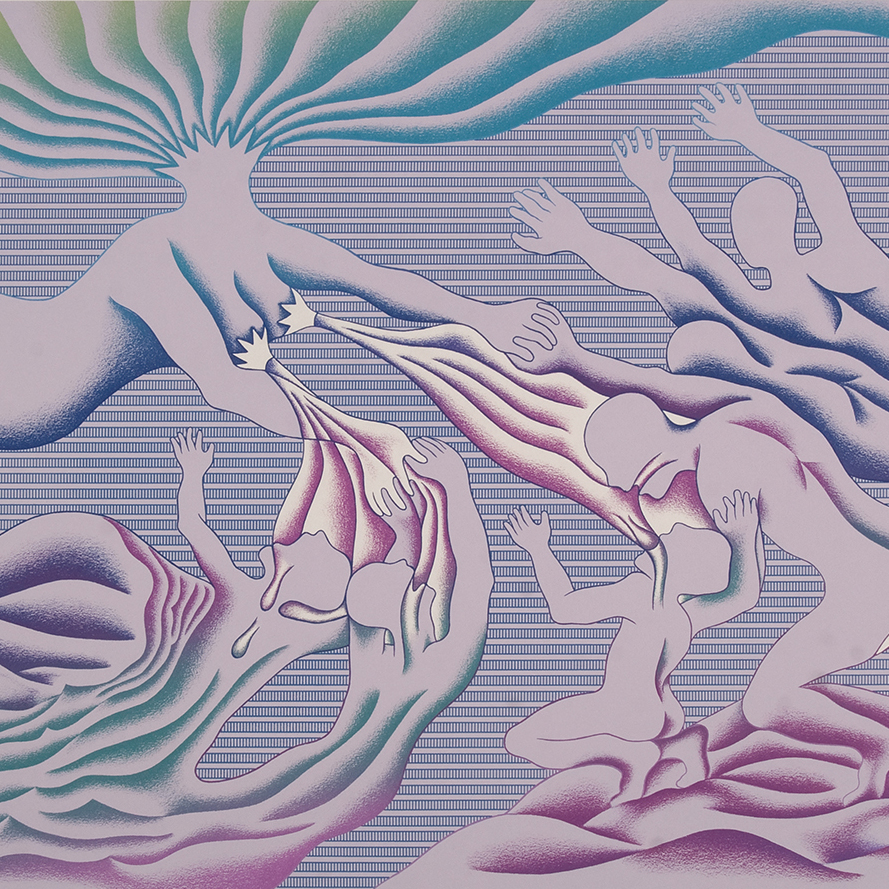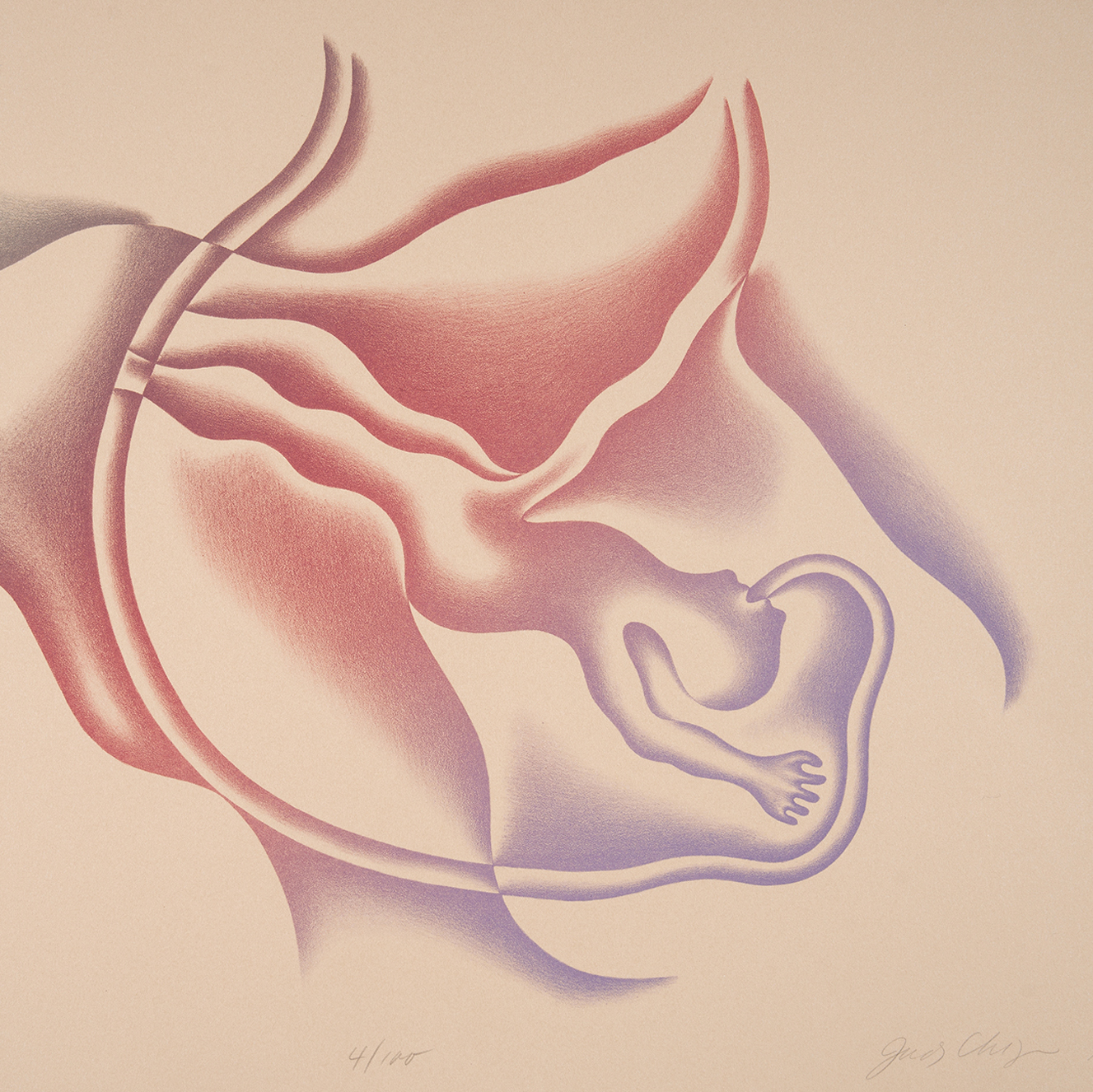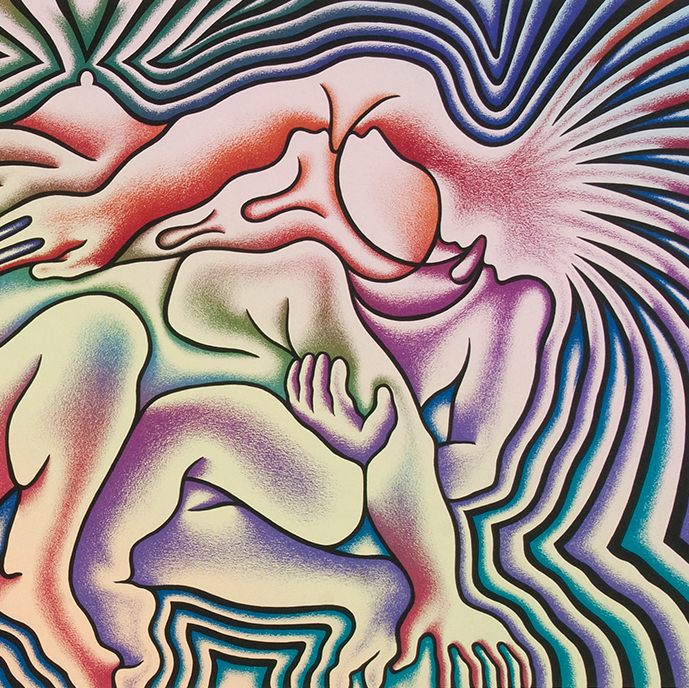B I R T H P R O J E C T
In the early eighties, following the completion of her renowned
installation The Dinner Party (1974-79), Chicago embarked on her second
major work, The Birth Project (1980-85). In the spirit of community and
consciousness-raising, this series was created in collaboration with more than
150 volunteer artisans. Chicago, realizing that there were no images of birth
in Western art history, sought to once again transform a patriarchal discourse
with images that had been made invisible. As Chicago writes in Beyond the
Flower: The Autobiography of a Feminist Artist, “I certainly understood
what this iconographic void signified: that the birth experience (with the
exception of the birth of the male Christ) was not considered important subject
matter, not even to women.”
P O W E R P L A Y
![]()
In 1982-87, Chicago investigated the toxic construct of masculinity. While traveling through Italy in 1982, Chicago was inspired by the style and scale of Renaissance painting, though she noted that, of course, it served to heroize the male as the harbinger of reason and virtue. Images of heroic men would of course return to more overtly evil ends with fascist neoclassicism. To combat this, Chicago renders the male body in the statuesque Renaissance style and oftentimes with the same horizontality of the frieze to different ends: to expose the destructive and petulant nature of masculinity. Jonathan D. Katz describes the series as in line with deconstructionist/conceptual art, “In appropriating a tradition of heroic masculinity in order to dissect and undercut a tradition of heroic masculinity, Chicago thus makes irony her handmaiden, the very irony that was, at the time these works were first shown, increasingly in evidence as a means of resistance across the art world at large.”
P O W E R P L A Y

In 1982-87, Chicago investigated the toxic construct of masculinity. While traveling through Italy in 1982, Chicago was inspired by the style and scale of Renaissance painting, though she noted that, of course, it served to heroize the male as the harbinger of reason and virtue. Images of heroic men would of course return to more overtly evil ends with fascist neoclassicism. To combat this, Chicago renders the male body in the statuesque Renaissance style and oftentimes with the same horizontality of the frieze to different ends: to expose the destructive and petulant nature of masculinity. Jonathan D. Katz describes the series as in line with deconstructionist/conceptual art, “In appropriating a tradition of heroic masculinity in order to dissect and undercut a tradition of heroic masculinity, Chicago thus makes irony her handmaiden, the very irony that was, at the time these works were first shown, increasingly in evidence as a means of resistance across the art world at large.”
